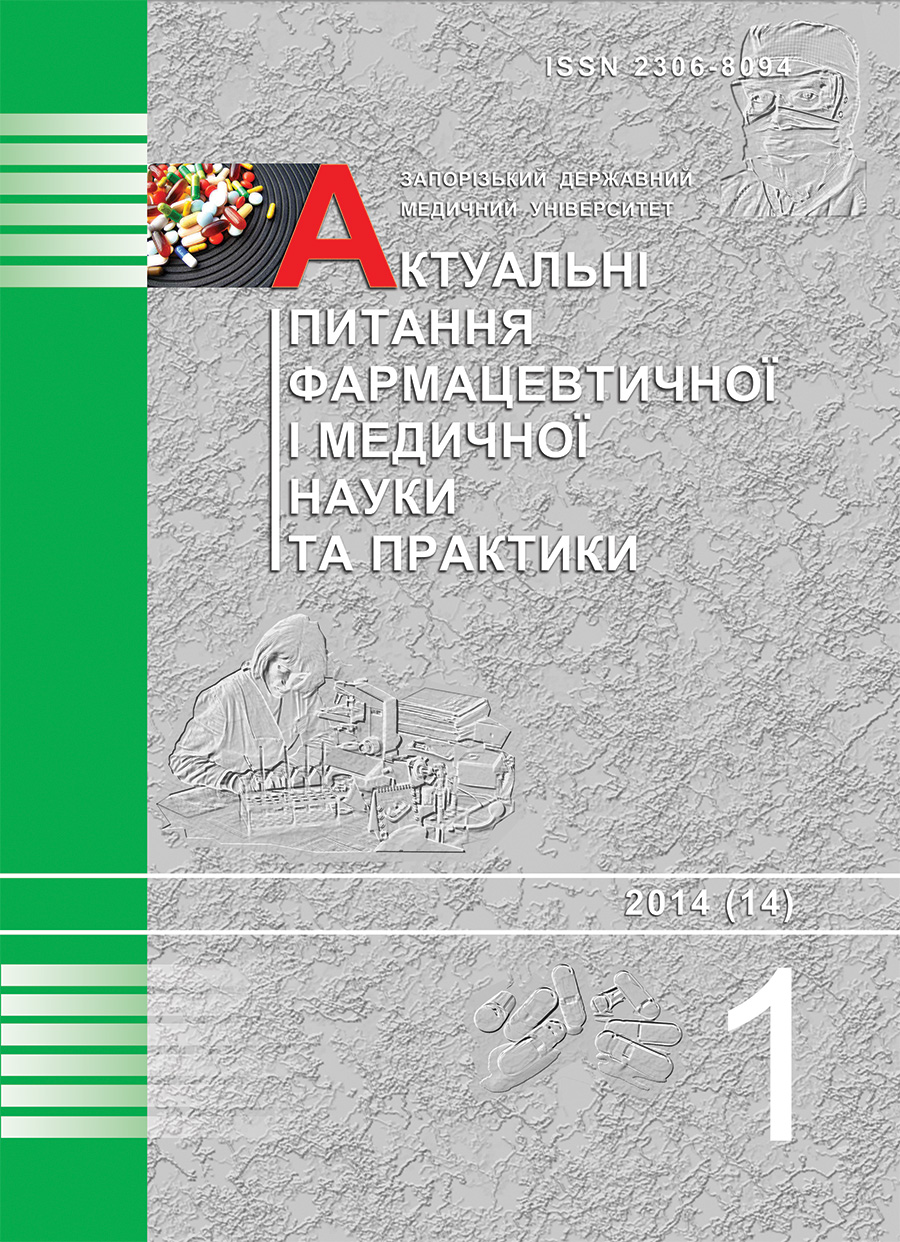Update state of suppository bases’ assortment and factors of their selection
DOI:
https://doi.org/10.14739/2409-2932.2014.1.24653Keywords:
suppository bases, cocoa butter, oilsAbstract
Introduction. At the present moment compounding of suppositories is a promising tendency considering that this dosage form has some advantages and is an alternative to the oral and parenteral medications. However not only active substances but excipients (suppository bases) also play a great role for achievement of desirable therapeutical effect.
The aim of this article is to research an assortment of suppository bases, their advantages and disadvantages and to present factors of selection.
Fatty bases are perhaps the most frequently employed suppository bases, principally because cocoa butter is a member of this group of substances. Among the other fatty or oleaginous materials used in suppository bases there are many hydrogenated fatty acids of vegetable oils such as palm kernel oil and cottonseed oil. Also, fat-based compounds containing compounds of glycerin with the higher molecular weight fatty acids, such as palmitic and stearic acids, may be found in fatty suppository bases.
The main members of water-soluble bases are polyethylene glycols and poloxomers. Various combinations of polyethylene glycols may be combined by fusion, using two or more of the various types to achieve a suppository base of the desired consistency and characteristics. Glycerin-gelatin base is composed of glycerin (5 p.), gelatin (1 p.), and purified water (2 p.).
Diphylic suppository bases contain hydrophylic and hydrophobic parts and make it possible to incorporate water solutions and oleaginous ingredients. Selection of the base involves the nature of the active substance, manufacturing procedures and physical-chemical characteristics.
Conclusions. It is apparent then, that a great number of suppository bases have been developed but none of them answers the requirements. So the search of new suppository bases is main problem of pharmaceutical technology. Also the necessity of new domestic bases development has been noted.
References
Перцев І.М. Супозиторні лікарські препарати на ринку України / І.М. Перцев, В.В. Постольник, О.Л. Халєєва // Вісник фармації. – 2001. – № 1(25). – С. 43–49.
Ярних Т.Г. Супозиторні основи: вивчення ассортименту / Т.Г. Ярних, К.В. Толочко, В.М. Чушенко // Акт. пит. фарм. і мед. науки та практики. – 2010. – Вип. XXIII. – № 4. – С. 79–80.
Марченко Л.Г. Технология получения суппозиториев / Л.Г. Марченко, А.В. Русак, М.Е. Смехова // Фарм. технологии и упаковка. – 2008. – № 2. – С. 49–60.
Loyd V. Allen, Jr. Compounding suppositories. Part 1 / Loyd V. Allen, Jr. // Secundum Artem. – Vol. 3. – № 3.
Тихонов А.И. Технология лекарств : [учеб. для фармац. вузов] / А.И. Тихонов, Т.Г. Ярных. – Х. : Оригинал, 2006. – 704 с.
Державна фармакопея України / Державне підприємство «Науково-експертний фармакопейний центр». – 1-е вид. – Х. : РІРЕГ, 2001. – 556 с.
Комилов Х.М. Получение гидрофобных основ из различных жиров и масел для мягких лекарственных форм / Х.М. Комилов, Я.К. Назирова, К.С. Махмуджанова // Химико-фармацевтический журнал. – 2009. – Т. 43. – № 10. – С. 50–51.
Loyd V. Allen, Jr. Compounding rectal dosage forms. Part 2 / Loyd V. Allen, Jr. // Secundum Artem. – Vol. 14. – № 4.
Головкин В.А. Urethralia. Уретральные лекарственные средства / В.А. Головкин, А.А. Люлько, А.В. Головкин // Запорож. мед. журн. – 2002. – № 5(15). – С. 68–71.
Loyd V. Allen, Jr. Compounding rectal dosage forms. Part 1 / Loyd V. Allen, Jr. // Secundum Artem. – Vol. 14. – № 2.
Loyd V. Allen, Jr. Compounding for hospice patients / Loyd V. Allen, Jr. // Secundum Artem. – Vol. 9. – № 2.
Loyd V. Allen, Jr. Compounding with glycerin and propilinglycol / Loyd V. Allen, Jr. // Secundum Artem. – Vol. 12. – № 3.
Downloads
How to Cite
Issue
Section
License
Authors who publish with this journal agree to the following terms:
- Authors retain copyright and grant the journal right of first publication with the work simultaneously licensed under a Creative Commons Attribution License that allows others to share the work with an acknowledgement of the work's authorship and initial publication in this journal.

- Authors are able to enter into separate, additional contractual arrangements for the non-exclusive distribution of the journal's published version of the work (e.g., post it to an institutional repository or publish it in a book), with an acknowledgement of its initial publication in this journal.
- Authors are permitted and encouraged to post their work online (e.g., in institutional repositories or on their website) prior to and during the submission process, as it can lead to productive exchanges, as well as earlier and greater citation of published work (See The Effect of Open Access)

